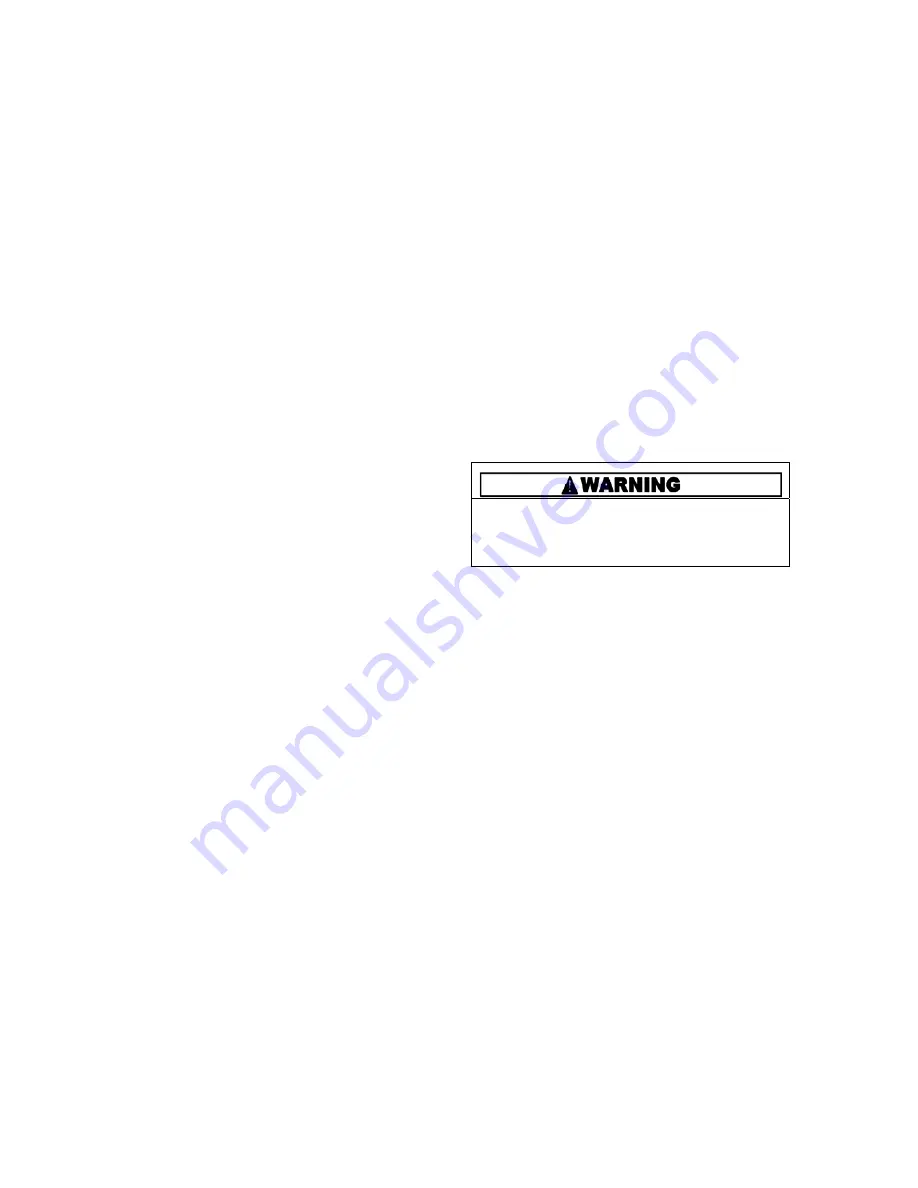
IBC Technologies Inc.
15
VFC 15-150 and VFC 45-225
low as 60 seconds if desired. Secondary
pumps can be set to run up to 5 minutes
after burner shutdown (for the last calling
load). As shipped, the default software
will run the Load 3 / DHW pump for 5
minutes to place the legacy heat where it
is useful – e.g. in the DHW tank. Any
secondary pump can be set to run for 0 –
300 seconds in the
heat purge
mode.
Guard against deadheading pumps when
all zone valves are closed. See #16, p 34.
There are two water flow sensors, located
on the boiler’s supply and return water
piping. These act to provide both low
water pressure cut-off protection and
water flow measurement. Schematics for
several piping layouts are provided (see
Installation Rules
– (page16). Installers
shall conform the piping design to one of
the provided configurations to simplify
the control application, promote good
loads-and- flows management.
The primary pump must be under the
control of the boiler, to allow the boiler’s
flow proving routine to run. The boiler
control looks for flow/no flow during a
pump on / off check on each start up.
Ensure that temporarily wired primary or
secondary pumps (e.g. wired externally
during the system fill/purge phase) are
returned to the boiler’s control terminals.
A “
No Water Flow
” error message will
otherwise be experienced on start-up.
The VFC modulating series boilers offer
unparalleled matching of heat generation
to radiation. The low minimum firing is
better suited to low thermal loads
presented in a typical multi-zoned
radiation system. However, where
individual zones in a heating system have
loads under 5,000 Btu/hr, the system will
still benefit through use of a buffer tank
to ensure a controlled supply temperature,
and to prevent short cycling. Buffering
should be added on the secondary piping
of the relevant load, to avoid bulking up
the thermal mass of the primary piping
circuit (and potentially lengthen the
duration of the transition from hot to cool
loads).
Propylene glycol solution is commonly
used in a closed loop where freeze
protection is required. Its density is lower
than that of water, resulting in lower
thermal performance at a given flow and
pressure. As a rule of thumb, a 50%:50%
solution of propylene glycol and water
will require an increased system
circulation rate (gpm up 10%), and
system head (up 20%) to provide
performance equivalent to straight water.
Do not use Ethylene Glycol, automotive-
type antifreeze, or undiluted antifreeze.
This may result in severe boiler damage
Whether required by local Codes or
otherwise, it is recommended that piping
systems include a suitable backflow
preventer, gate valve and feedwater
regulator set at 12 psig in the make-up
water link with the city main, or use a
glycol feeder system (e.g. Axiom tank).
Follow applicable Codes and good piping
practice.
VFC modulating series boilers can be
connected directly to a floor of non-
oxygen barrier polybutylene material (PB
tubing). For maintenance of warranty on
such systems, we require evidence of a
thorough flushing of all loops, plus
installation of a side stream filter. A filter
maintenance routine shall be carried out
after the retrofit, with filter clearing after
the 1
st
day, 1
st
week, month and annually
thereafter. Care is to be taken to avoid
use of ferrous fittings and pumps on PB
tube systems.
















































